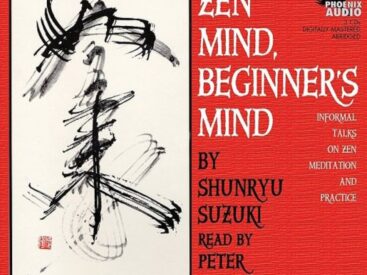In this article, we embark on a journey through the annals of statistical literature to discover the best statistics books of all time. These books, authored by eminent statisticians and data scientists, have left an indelible mark on the field, shaping the way we collect, analyze, and interpret data. From classic to contemporary, we’ll explore a diverse range of titles that cater to beginners and experts alike, offering a rich tapestry of statistical wisdom.
Whether you’re looking for a timeless classic that has stood the test of time or a modern masterpiece that harnesses the latest statistical techniques, this curated list will help you find the perfect statistics book to expand your horizons and sharpen your analytical skills. Join us as we delve into the world of numbers, probabilities, and insights, and discover the must-read statistics books that have earned their place as timeless treasures in the realm of data science.
All of Statistics: A Quick, Thorough Course in Statistical Inference by Larry Wasserman
Featured On:
- Wizzley;
- Goodreads.
While the book, “All of Statistics”, might suggest an overstatement, its content truly gives a vast overview beyond the usual scope of an introductory mathematical statistics textbook. Aiming to equip readers with a rapid understanding of probability and statistics, it’s an ideal resource for graduate students or those at an advanced undergraduate level studying computer science, mathematics, statistics, and other related fields.
Some of the key features of this book include:
- Detailed coverage of modern topics such as non-parametric curve estimation, bootstrapping, and classification, subjects typically covered in higher-level courses;
- Assumes reader familiarity with calculus and basic linear algebra, but does not require prior knowledge of probability and statistics;
- Explores areas such as statistics, data mining, and machine learning, all vital aspects in the field of data collection and analysis.
In summary, this book bridges the knowledge gap between introductory and advanced courses, equipping students with a strong foundation in statistics, making it a must-have resource for anyone seriously engaged in the field of statistics and data analysis.
Data Exploration with Regression and Multilevel Models by Andrew Gelman
Recognized on:
- Lab Stats;
- Goodreads.
Embrace the world of data analysis with Andrew Gelman’s in-depth guide titled “Data Exploration with Regression and Multilevel Models”. This textbook serves as a complete handbook for any applied researchers aiming to venture into data analysis utilizing both linear and nonlinear regression and multilevel models.
An extensive range of models is introduced in the book, providing readers with comprehensive knowledge on fitting these models using available software packages. To fully master these complex concepts, the textbook leverages numerous real-world examples based on the authors’ own applied research. In addition, programming codes are included for each example, offering practical and immediate application for readers.
Major areas of focus in the textbook include:
- Causal Inference: Explore how regression, poststratification, matching, regression discontinuity, and instrumental variables play a pivotal role in determining causal relationships in data;
- Multilevel Logistic Regression: Delve into logistic regression analysis, an important statistical method used to analyze data with binary outcomes;
- Missing-Data Imputation: Learn effective ways to handle missing data in datasets, a common problem in data analysis.
In summary, this textbook is a wealth of information for anyone aspiring to master applied research data analysis. Its hands-on approach, anchored by real-world examples and practical programming codes, makes it an invaluable resource for understanding and implementing regression and multilevel models in data analysis.
‘Interpreting Statistics with Honesty & Vigilance’ by Darrell Huff
As recognized in:
- Stat Trek;
- Goodreads.
Become a savvy statistician with Darrell Huff’s engaging guide, ‘Interpreting Statistics with Honesty & Vigilance’. This book pulls back the curtain on the widespread misuse of statistics in various settings and allows readers to critically examine data’s role in shaping public opinion, influencing policies, or affecting business decisions.
The book targets a broad spectrum of statistical applications widely used in contemporary society and scrutinizes each one comprehensively. This includes elements such as sampling studies, tabulation methods, interview techniques, and how interpretations and inferences are derived from raw data.
Important highlights in the book include:
- Sample Study Evaluation: Learn how to assess the reliability and validity of a sample study;
- Tabulation Method Mastery: Understand the intricacies of various tabulation techniques, and how to discern potential bias or manipulation;
- Effective Interview Techniques: Develop the skill to analyze interview data critically and interpret the underlying implications accurately;
- Results Derivation Insight: Learn to examine the process of how results are derived from data, and how to spot any potential discrepancies or alterations.
In essence, this book underscores the crucial importance of transparency and honesty in statistical analysis. By illustrating the possible pitfalls and misinterpretations that can occur in data analysis, ‘Interpreting Statistics with Honesty & Vigilance’ helps equip readers with the tools required to read and use statistics with a vigilant and discerning mindset. This makes it a must-read for any aspiring statistician, policy maker, business owner, or anyone else aiming to use statistics in a responsible and ethical manner.
‘Principles of Statistical Inference’ by George Casella
Featured on:
- Wizzley;
- Goodreads.
Dive deep into statistical theory with George Casella’s ‘Principles of Statistical Inference’. This book delivers a thorough understanding of theoretical statistics, rooted in the rudimentary principles of probability theory.
The narrative of the book is built progressively – starting from fundamental concepts of probability and gradually advancing towards the intricacies of statistical inference. Each concept and technique introduced is inherently statistical, organically evolving from prior concepts, which makes the learning process holistic and seamless.
Ideal for early graduate students, the book is particularly useful for those majoring in statistics with a solid mathematical foundation. However, the emphasis is not solely on theory. Practical application of statistical principles is foregrounded throughout the book, allowing readers to not just understand, but effectively apply these concepts to various situations.
Key aspects of the book include:
- Basics of Probability: The book starts from scratch, building readers’ understanding of probability before advancing to more complex topics;
- Statistical Definitions: Comprehensive coverage of major statistical definitions, aiding readers to understand the jargon;
- Practical Oriented: The book stresses more on understanding and applying basic statistical concepts rather than on formal optimality investigations;
- Variety of Situations: It provides statistical procedures for a wide range of situations, making it a versatile resource.
In short, ‘Principles of Statistical Inference’ is an impeccable blend of theory and practice, enabling readers to derive reasonable statistical procedures for a multitude of situations. It fills the gap between understanding, deriving, and applying essential statistical concepts, making it a must-have for every statistics enthusiast.
‘Statistical Pitfalls and How to Avoid Them: An Indispensable Companion for Researchers’ by Alex Reinhart
Recognized in:
- Wall Street Mojo;
- Goodreads.
Embark on a journey to good statistical practices with the insightful guide ‘Statistical Pitfalls and How to Avoid Them’ by Alex Reinhart. This book unearths the common misconceptions and errors that often mar statistical analysis in scientific research. It’s a crucial resource designed to help researchers steer clear of statistical blunders and enhance the quality of their work.
Shedding light on recent research gaffes, the book provides readers with a deep awareness of the underlying misconceptions and bureaucratic politics, which often lead to these mistakes. It is also a call to action, encouraging readers to seek improvement in their statistical practices.
The book’s contents bundle together industry insights, practical tips, and case studies, making it more than a manual but a necessary companion for researchers across disciplines.
The guide covers key areas such as:
- Common Statistical Errors: Learn about the frequently committed statistical blunders in scientific research and how to avoid them;
- Misconceptions and Politics: Develop an understanding of the misconceptions and systemic issues that contribute to such errors;
- Practical Improvement Strategies: Implement practical measures to improve statistical practices in research.
Ultimately, ‘Statistical Pitfalls and How to Avoid Them’ is a tool for self-improvement. It helps researchers understand how to evade statistical pitfalls, enhancing the integrity and reliability of their work. Whether you’re an experienced researcher or just starting, this guide is definitely a wise investment for any scientific endeavor.
‘Understanding Statistics: Your Quick-Start Handbook’ by Sarah Boslaugh, Paul Andrew, and Dr. Watters
Recognized by:
- Goodreads;
- Stat Trek.
Desire a fast yet thorough grasp of statistics? Whether it’s for professional development or acing an upcoming course, ‘Understanding Statistics: Your Quick-Start Handbook’ is the comprehensive guide that gets straight to the point.
Boasting a series of revisions and expansions, this edition has been meticulously curated to deliver a robust understanding of statistics without the convoluted complexity that can often deter readers. The structure of each chapter ensures an easy learning process with lucid descriptions accompanied by illustrations, formulas, resolved examples, and interactive exercises.
The book’s features include:
- User-Friendly Layout: Each chapter is designed to provide comprehensive knowledge in a clear and concise manner;
- Interactive Learning: A variety of hands-on exercises has been incorporated to help readers apply their learning in a practical setting;
- Wide Spectrum of Techniques: The book delves into a range of common statistical analyses, introducing a gamut of useful techniques.
Essentially, ‘Understanding Statistics: Your Quick-Start Handbook’ delivers on its promise of being a quick-start guide – it provides the essential knowledge required to navigate the world of statistics comfortably. This new approach to statistics is perfect for anyone seeking a straightforward yet comprehensive introduction to the subject.
‘Deciphering P-Values: A Story-Driven Approach to Understanding Statistics’ by Andrew J. Vickers
Recognized on:
- Big Data Made Simple;
- Stat Trek.
‘What is a p-value anyway?’ is a question that vexes many. If you’re among those intrigued by p-values and statistics but find the existing literature overwhelming, Andrew J. Vickers’s ‘Deciphering P-Values: A Story-Driven Approach to Understanding Statistics’ is your go-to guide.
Vickers, a seasoned medical researcher, uses his professional experience and narrative flair to make complex statistical concepts engaging and approachable. Bypassing complicated mathematical jargon, Vickers presents articles in the form of interesting stories. This storytelling format aids readers in understanding and interpreting everyday statistics.
Focused on fundamental principles of statistics, this book covers:
- Data Description: Understand different ways of describing data, including the mean, median, mode, and range;
- Data Distributions: Familiarize yourself with various data distribution types and their importance in statistical analysis;
- Confidence Intervals: Learn about the precision of study results through confidence intervals;
- Regression & Decision Making: Explore the link between statistics, prediction, and decision-making;
- Avoiding Common Errors: Get insights on frequent statistical errors and how to avoid them.
The book ‘Deciphering P-Values: A Story-Driven Approach to Understanding Statistics’ makes the world of statistics accessible, intriguing, and practical. It promises readers not only a theoretical understanding of statistics but also the ability to apply these concepts in real-world scenarios. Whether you’re a student, a researcher, or an enthusiast willing to navigate the maze of statistics, this guide offers an engaging and enjoyable pathway.
Unlocking the World of Statistics: A Comprehensive Guide to “Statistics For Dummies, 2nd Edition” by Deborah J. Rumsey
Are you one of those who break into a cold sweat when faced with the daunting world of statistics? Fear not, for we have the perfect solution to ease your statistical anxiety. Dive into the world of “Statistics For Dummies, 2nd Edition” by Deborah J. Rumsey – an engaging, hardcover format guide that transforms the complex into the comprehensible.
Where You Can Find It
This invaluable guide is making waves across the digital realm, endorsed by reputable sources like Stat Trek and Goodreads. It’s not just a book; it’s a portal into a world where numbers cease to intimidate and start to empower.
Demystifying the Statistical Universe
Statistics For Dummies takes you on a journey through the seemingly labyrinthine world of numbers and data. Here’s what you can expect to uncover within its pages:
- Clear Explanations: The book provides crystal-clear explanations of statistical concepts, demystifying jargon and turning complex ideas into understandable nuggets of knowledge. It’s like having a patient and knowledgeable tutor right at your fingertips;
- Practical Examples: The text is peppered with real-world examples that bridge the gap between theory and practice. These examples illustrate how statistics play a vital role in your everyday life, from understanding trends in your favorite sports team’s performance to making informed decisions in your career;
- Graphs and Charts Decoded: One of the book’s key strengths lies in its ability to help you interpret and critique graphs and charts. You’ll no longer find yourself baffled by the intricacies of these visuals; instead, you’ll use them as powerful tools to convey information effectively.
Probability Made Intuitive
Probability is a fundamental concept in statistics, and this guide will empower you to confidently determine the odds. Here’s how:
- Confidence Intervals: Gain the ability to guesstimate with confidence using confidence intervals. This statistical technique allows you to make educated guesses about a population parameter based on a sample of data. Practical advice and examples in the book will ensure you master this skill;
- Hypothesis Testing: Setting up and executing a hypothesis test becomes a breeze with the book’s comprehensive guidance. Whether it’s assessing the effectiveness of a new drug or evaluating the impact of a marketing campaign, you’ll have the tools to make informed decisions.
Becoming a Statistical Wizard
The book equips you with the tools to become a statistical wizard, capable of computing various statistical formulas and analyses. Whether you’re a student looking to ace your statistics course or a professional seeking to enhance your analytical skills, this guide has got you covered.
Why Choose “Statistics For Dummies, 2nd Edition”
Still not convinced? Here’s why you should consider adding this book to your collection:
- Updated Examples: The book features examples that resonate with today’s students and professionals, ensuring that the content remains relevant and relatable;
- Teaching Methods: The explanations and approach mirror effective teaching methods, making it easier for you to grasp complex concepts;
- Real-World Problems: “Statistics For Dummies” doesn’t just teach theory; it equips you with the skills to tackle real-world problems. The practical advice ensures that you can apply your statistical knowledge in both educational and professional settings.
Unraveling the Fascinating World of Statistics
In the not-so-distant past, the realm of statistics was often considered a tedious and dry subject. However, in today’s dynamic world, it has undergone a dramatic transformation, earning the attention and admiration of prominent figures like Hal Varian, the chief economist at Google, who has gone so far as to describe it as “sexy.” Statistics has transcended its academic confines and become an indispensable tool in various facets of our lives, from deciphering batting averages in sports to shaping political polls, from driving game show strategies to guiding groundbreaking medical research.
The Ever-Expanding Horizon of Statistical Applications
Statistics has evolved into a powerhouse discipline with limitless real-world applications. It plays a crucial role in addressing perplexing questions such as:
- How can we identify schools that engage in cheating on standardized tests?;
- What enables Netflix to predict which movies you’ll adore?;
- What factors contribute to the increasing prevalence of autism?
As we delve into the captivating world of statistics through the eyes of Charles Wheelan in his bestselling book, “Naked Statistics,” we find that the right data, coupled with a handful of well-chosen statistical tools, hold the key to unraveling these and many more mysteries of our complex world.
Demystifying Statistics for All
For those who may have dozed off during their Statistics 101 class, Wheelan’s book is nothing short of a lifeline. He skillfully peels away the layers of arcane terminology and technical jargon that can often intimidate and confuse even the most seasoned statisticians. Instead, he invites us to embrace the intuitive essence that underlies statistical analysis, making it accessible to everyone.
Key Concepts Made Crystal Clear
Within the pages of “Naked Statistics,” Wheelan brings crucial statistical concepts into the spotlight, ensuring that readers gain a deep understanding of:
- Inference: How we draw meaningful conclusions from data;
- Correlation: Unraveling the relationships between different variables;
- Regression Analysis: Predicting future outcomes based on historical data.
The Danger of Misleading Data Manipulation
One of the book’s invaluable lessons is the illumination of the dark art of data manipulation. Wheelan exposes how unscrupulous or careless individuals can distort or misrepresent data to suit their agendas. Armed with this knowledge, readers can develop a keen eye for detecting misleading information in today’s data-driven world.
Harnessing the Power of Natural Experiments
In “Naked Statistics,” we also discover the ingenuity of researchers who employ the wealth of data generated by natural experiments to tackle intricate questions. These experiments, often beyond our control, provide a unique opportunity to explore causality and uncover hidden patterns. Wheelan’s book sheds light on how creative minds harness this resource to unlock solutions to complex issues.
Navigating the Data-Driven Era
In an age where data is king, “Naked Statistics” serves as an indispensable guide for both novices and experts alike. It equips us with the knowledge to ask critical questions, challenge the status quo, and make informed decisions in an increasingly data-saturated world. Wheelan’s engaging narrative takes readers on a journey through the fascinating landscape of statistics, where the mundane becomes enthralling, and the complex becomes comprehensible.
Navigating Bayesian Data Analysis: A Comprehensive Journey with R and BUGS
In today’s dynamic world of statistics, Bayesian analysis has captured the imagination of data enthusiasts and researchers alike. The surge in interest can be attributed to the advent of cutting-edge computational techniques, which have rendered Bayesian analysis more approachable and user-friendly than ever before. “Doing Bayesian Data Analysis: A Tutorial Introduction with R and BUGS,” authored by the esteemed John Kruschke, is a treasure trove of knowledge designed to cater to a wide audience, ranging from first-year graduate students to advanced undergraduates.

Here, we delve into the depths of this exceptional resource and explore why it has become a staple on platforms like Count Bayesie, Goodreads, and Lab Stats.
What Sets “Doing Bayesian Data Analysis” Apart?
- Accessible Approach: The book adopts a unique approach by breaking down complex mathematical concepts into intuitive, easy-to-grasp explanations. Even if you possess only a basic understanding of algebra and perhaps some ‘rusty’ calculus knowledge, you’ll find yourself right at home within these pages;
- From Basics to Mastery: Unlike other textbooks, this comprehensive guide begins at the very foundations of Bayesian statistics. It demystifies crucial concepts like probability and random sampling, ensuring that readers are well-prepared to embark on their Bayesian journey;
- A Gradual Ascent: As you progress through the book, you’ll ascend to new heights of expertise. It doesn’t throw you into the deep end; instead, it patiently guides you through advanced hierarchical modeling methods, which are invaluable when dealing with real-world data;
- Hands-On Experience: “Doing Bayesian Data Analysis” doesn’t just inundate you with theory; it equips you with practical tools. The book provides complete examples using the R programming language and the versatile BUGS software, both of which are freely available;
- Programming Made Easy: If you’re new to programming, fear not! The book kicks off with basic programming examples, ensuring that you build a solid foundation. Gradually, it leads you to creating full-fledged programs capable of handling complex analyses and generating compelling presentation graphics;
- Adaptability: The templates provided within the book are like Swiss Army knives for statisticians. They can be easily customized to suit a wide range of research needs, making this a valuable resource for students and researchers alike.
Guiding You from Undergraduate to Bayesian Expert
“Doing Bayesian Data Analysis” serves as a bridge, connecting the dots between your undergraduate education and the realm of modern Bayesian methods. With its practical approach and comprehensive content, it empowers you to confidently explore Bayesian statistics, providing the tools and knowledge needed to tackle real-world data challenges.
Statistics by David Freedman, Robert Pisani, and Roger Purves: A Comprehensive Guide to the World of Data Analysis
Statistics is more than just numbers; it’s the key to understanding and harnessing the vast sea of data that surrounds us. Authored by the renowned trio of David Freedman, Robert Pisani, and Roger Purves, this masterpiece is a beacon in the world of data analysis. Not only does it enlighten readers on core statistical concepts, but it also weaves these principles into real-life scenarios, making it a truly indispensable resource for both beginners and seasoned statisticians.
Where You Can Find This Treasure Trove of Knowledge
This enlightening work isn’t just confined to dusty bookshelves; it has found its way into numerous lists and platforms, demonstrating its widespread recognition and value. Here are some of the places where you can discover this gem:
- Stat Trek: A reputable online resource for statistics enthusiasts. Their endorsement of this book speaks volumes about its quality and relevance in the field;
- Wizzley: An online writing platform known for its insightful articles and informative content. Statistics graces its pages, emphasizing its universal appeal;
- Goodreads: A hub for book lovers and reviewers, Goodreads showcases the book’s popularity and positive feedback, further establishing its credibility.
Delving Deeper: What Sets “Statistics” Apart
Statistics isn’t just another mundane textbook; it’s a captivating journey through the realm of data analysis. Here’s why it stands out:
- Clear Prose: The authors’ ability to explain complex concepts in a straightforward and approachable manner sets this book apart. No more struggling with convoluted explanations; here, clarity reigns supreme;
- No-Nonsense Approach: Forget about unnecessary fluff and jargon. “Statistics” hones in on the essentials, ensuring that readers grasp the core concepts without being overwhelmed;
- Real-Life Illustrations: The power of statistics truly comes to life through real-world examples. This book seamlessly integrates these examples, making abstract ideas tangible and relatable.
Navigating the Contents: What You’ll Learn
Prepare yourself for a deep dive into the world of statistics. “Statistics” covers a wide array of topics that will equip you with invaluable skills for data analysis:
- Fundamental Concepts: Lay the foundation with a comprehensive understanding of essential statistical principles;
- Real-World Applications: See how statistics plays a crucial role in solving real-life problems and making informed decisions;
- Techniques and Methods: Dive into the toolbox of statistical methods, from hypothesis testing to regression analysis;
- Data Visualization: Learn the art of presenting data effectively, ensuring your insights are understood and impactful.
Conclusion
Ultimately, the best statistics book for you will depend on your specific interests, goals, and learning style. It’s essential to explore these recommended titles and choose the ones that resonate with you the most. Remember that learning statistics is not just about mastering formulas and techniques; it’s about developing a deeper understanding of data, making informed decisions, and contributing to the advancement of knowledge in various fields.
We hope this list serves as a helpful guide in your statistical journey, and we encourage you to keep exploring the rich world of statistics, seeking out new resources, and continually expanding your statistical knowledge. With the right tools and dedication, you can harness the power of statistics to make meaningful contributions in your academic, professional, and personal endeavors.



